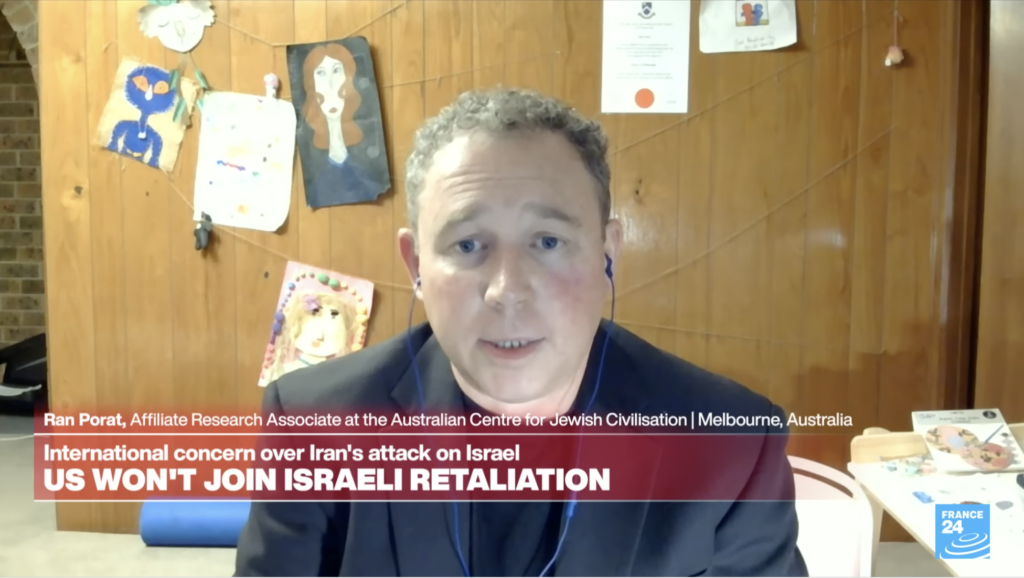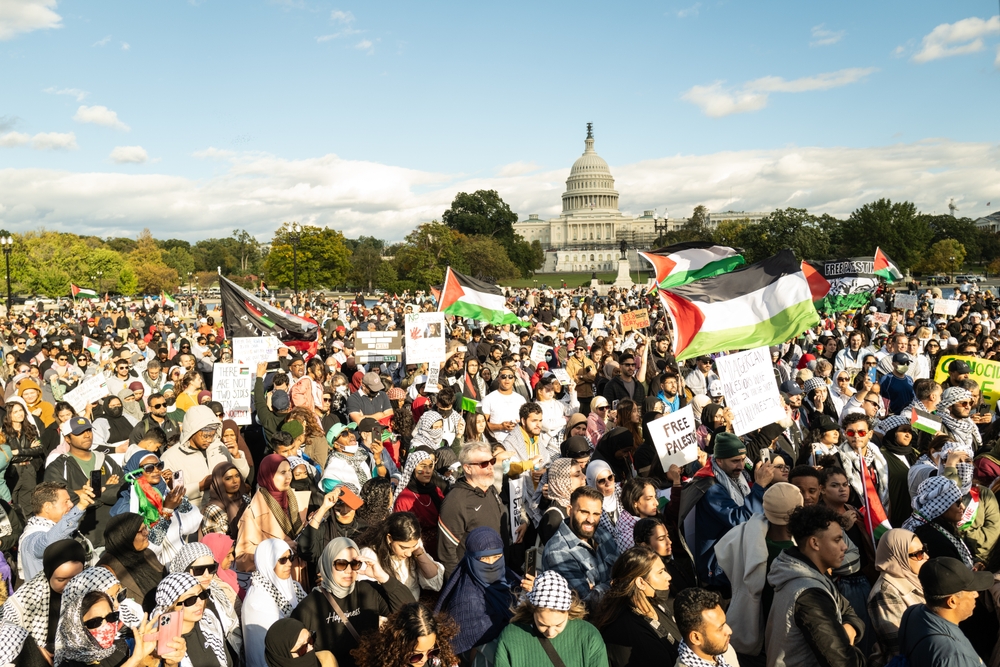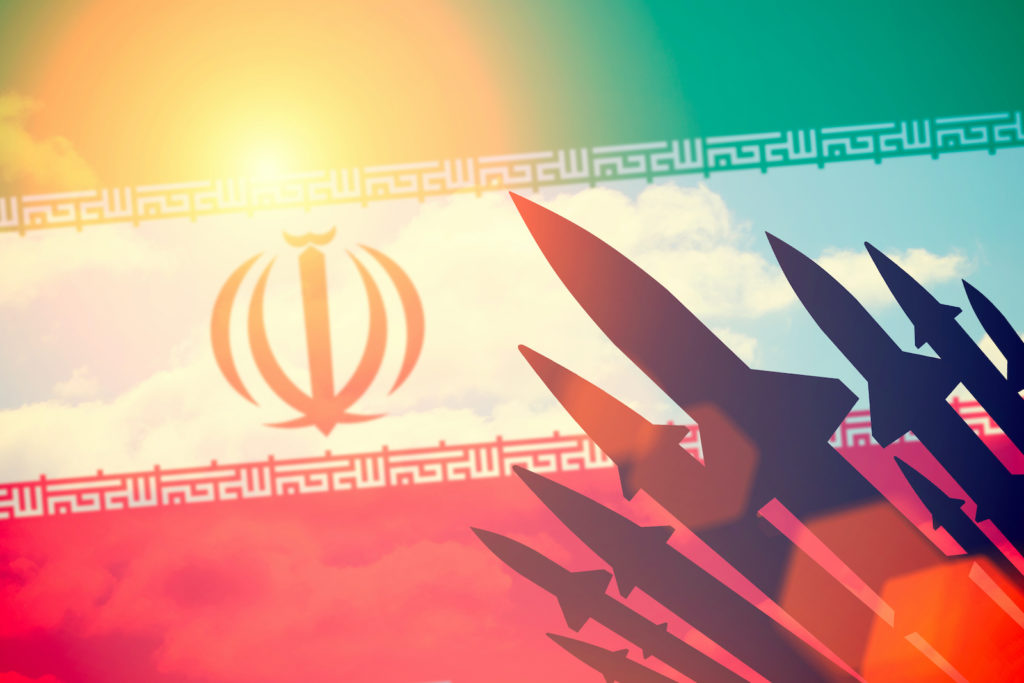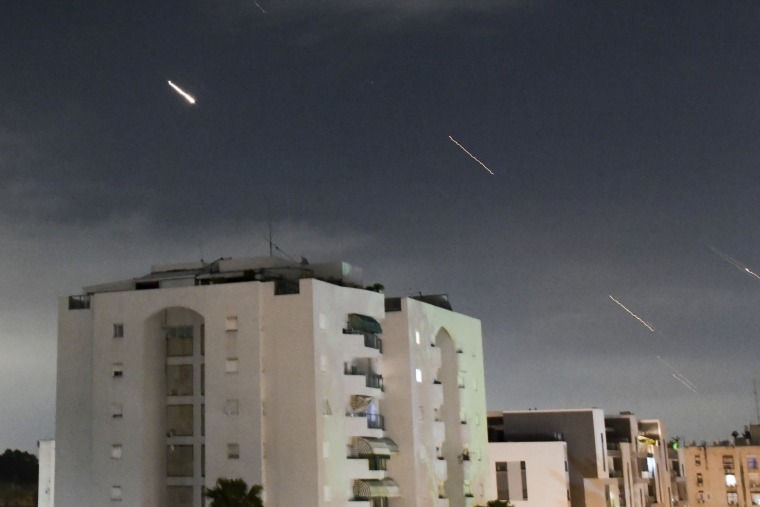UPDATES
The Iranian nuclear framework deal
Apr 7, 2015
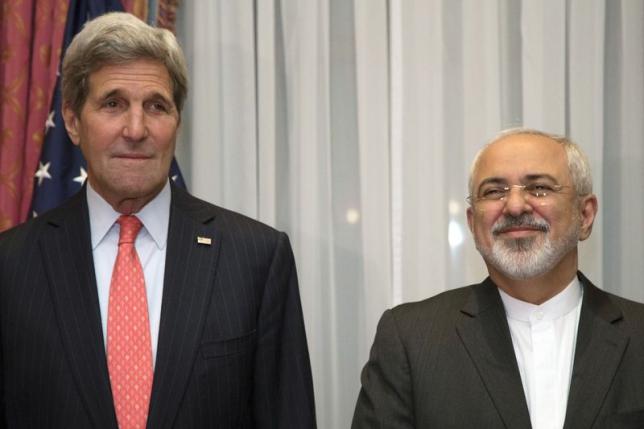
Update from AIJAC
April 7, 2015
Number 04/15 #02
This Update takes an initial look at the controversial Iranian nuclear framework deal that was verbally agreed to by US and P5+1 and Iranian negotiators late last week in Lausanne, as well as a good overview of the ongoing degeneration of countries across the Middle East into fractured lands dominated by militias.
First, Ehud Yaari, Middle East analyst for Israels Channel 2 News and an international fellow at the Washington Institute points out that Iran and the US have provided very different interpretations of what was actually agreed to. This, of course, is extremely significant, given the fact that nothing was actually signed. Yaari, who was quoted by the Times of Israel from his televised analysis, says that Iran and the US are offering fundamentally different interpretations of what was agreed to in six areas: the lifting of sanctions; the duration of restrictions on enrichment; the development of advanced centrifuges; inspections; what happens to Irans stockpile of already enriched uranium; and the broadly defined issue of the possible military dimensions of the Iranian program. These are not small issues and can greatly affect the ability of any final deal to prevent Irans breakout to the bomb - even if only temporarily. For more from Yaari, CLICK HERE.
Next, Times of Israel editor David Horovitz demolishes the idea that the only alternative for accepting the deal that was agreed to with Iran was to go to war. What was needed was not no deal at all, Horovitz concludes, What was needed - and crucially, what was possible given the economic pressure that had been mustered against Iran - was a better deal. Citing insights into the finer points of the deal by Israeli nuclear expert Dr. Emily Landau, head of the Arms Control program at the Institute for National Security Studies (INSS) at Tel Aviv University, Horovitz points out that it seems some of Iran’s nuclear infrastructure would only be mothballed as part of the deal - not fully dismantled or removed - and stand ready to be reactivated at any time should Iran decide to attempt to assemble the material necessary for a nuclear bomb. For Horovitz’s full critique, CLICK HERE.
(Similarly, on the Time Magazine web site, newly elected Kulanu MK and former Israeli Ambassador to the US Michael Oren criticises the negotiating strategy used against Iran, saying that the US should have been prepared to have walked away from the negotiating table in order to get a deal with better terms.)
Finally, Jonathan Spyer, director of the Rubin Center for Research in International Affairs, identifies how militias have now replaced central government and armies over five Arab states: Iraq, Syria, Lebanon, Yemen and Libya. Even in the cases where Iran has intervened to prop up certain players such as Bashar Assad in Syria, Spyer writes, it has done so by creating or sponsoring militias. For more of Spyers insights into the quagmire of the Middle East, CLICK HERE.
(Also, dont miss Spyer’s latest take on developments in Yemen and what they mean for the conflict between the Sunni Arab and Shiite Persian geopolitical alignments and Shiites and Sunnis generally.)
Readers may also be interested in:
- Israeli Prime Minister Binyamin Netanyahu issues a statement from April 3, following his cabinet meeting discussing the Iranian nuclear framework deal.
- Netanyahu was also interviewed on Sunday on NBC, ABC and CNN about his objections to the deal.
- New York Times columnist Thomas Friedman interviews US President Barack Obama on topics including the Iran deal and his support for Israel.
- Former US Middle East policy chief Elliott Abrams criticises the imprecise language Obama used in the Friedman interview when referring to the kind of support Israel can expect from the US
- In a blog on Commentary Magazine‘s web site, Michael Rubin says the most troubling line in Obamas interview was his comment that Iran will not get a nuclear weapon on my watch – rather than never.
- In the Atlantic, Jeffrey Goldberg suggests an Israeli national unity government would be Jerusalem’s best chance to influence the final nuclear deal with Iran.
- An op-ed in the Wall Street Journal by Reuel Marc Gerecht and Mark Dubowitz of the Foundation for Defense of Democracies calls the nuclear framework deal a victory for Iran.
US, Iran publicly at odds over 6 key aspects of nuke deal, Israeli expert finds
Times of Israel
April 4, 2015
Two days after the US-led powers and Iran hailed a historic framework understanding designed to ensure Irans nuclear program not enable it to build nuclear weapons, a leading Israeli analyst on Saturday [April 4] highlighted six gaping areas of discrepancy between American and Iranian accounts of what the agreement actually entails.
Ehud Yaari, Middle East analyst for Israel’s Channel 2 News and an international fellow at the Washington Institute think tank, said the six discrepancies represent very serious gaps at the heart of the framework accord. They relate to issues as basic as when sanctions will be lifted, and how long restrictions on uranium enrichment will remain in place.
Referring to Thursday’s [April 2] American-issued Parameters for a Joint Comprehensive Plan of Action, on the one hand, and the fact sheet issued Friday [April 3] by the Iranian Foreign Ministry, on the other, Yaari noted that no deal was actually signed on Thursday, and that the leaders statements and the competing fact sheets were thus critical to understanding what had been agreed.
Yaari also highlighted the highly similar language used by President Barack Obama to hail the framework agreement as a good deal that would make the world safer, on Thursday, and president Bill Clinton in presenting the failed US framework deal aimed at thwarting North Korea’s nuclear program in 1994.
Yaari cited the following central gulfs between the two sides accounts of what was resolved at the Lausanne negotiations last week:
1. Sanctions: Yaari said the US has made clear that economic sanctions will be lifted in phases, whereas the Iranian fact sheet provides for the immediate lifting of all sanctions as soon as a final agreement is signed, which is set for June 30.
(In fact, the US parameters state that sanctions will be suspended only after Iran has fulfilled all its obligations: US and EU nuclear-related sanctions will be suspended after the IAEA has verified that Iran has taken all of its key nuclear-related steps. By contrast, the Iranian fact sheet states: all of the sanctions will be immediately removed after reaching a comprehensive agreement.)
2. Enrichment: The American parameters provide for restrictions on enrichment for 15 years, while the Iranian fact sheet speaks of 10 years.
3. Development of advanced centrifuges at Fordo: The US says the framework rules out such development, said Yaari, while the Iranians say they are free to continue this work.
4. Inspections: The US says that Iran has agreed to surprise inspections, while the Iranians say that such consent is only temporary, Yaari said.
5. Stockpile of already enriched uranium: Contrary to the US account, Iran is making clear that its stockpile of already enriched uranium enough for seven bombs if sufficiently enriched, Yaari said will not be shipped out of the country, although it may be converted.
6. PMD: The issue of the Possible Military Dimensions of the Iranian program, central to the effort to thwart Iran, has not been resolved, Yaari said.
(The US parameters make two references to PMD. They state, first: Iran will implement an agreed set of measures to address the IAEAs concerns regarding the Possible Military Dimensions (PMD) of its program. And they subsequently add: All past UN Security Council resolutions on the Iran nuclear issue will be lifted simultaneous with the completion, by Iran, of nuclear-related actions addressing all key concerns (enrichment, Fordo, Arak, PMD, and transparency). The Iranian fact sheet does not address PMD.)
The differences between the sides became apparent almost as soon as the framework agreement was presented in Lausanne on Thursday night. Irans Foreign Minister Mohammad Javad Zarif issued a series of tweets [on April 2], for instance, that protested the US State Departments assertion that the nuclear deal struck between Iran and world powers would only see sanctions on the Islamic Republic removed in phases.
Nonetheless, the White House expressed optimism on Friday [April 3] that the June 30 deadline for a final deal would be met, and Obama reiterated that the deal reached Thursday represented a historic understanding.
Israel has castigated the framework as a bad deal, and a dangerous capitulation, that paves the way to an Iranian nuclear bomb.
Back to Top
————————————————————————
Defeatist Obama’s deal with the devil
David Horovitz
Times of Israel
April 3, 2015
Extolling the virtues of his deal with Iran on Thursday, President Barack Obama made a false and extremely nasty assertion: It’s no secret, he claimed, incorrectly, that the Israeli prime minister and I dont agree about whether the United States should move forward with a peaceful resolution to the Iranian issue.
It is indeed no secret that Obama and Netanyahu dont agree on how to thwart Iran’s nuclear weapons ambitions. It is emphatically not the case, however, that Israels prime minister opposes a peaceful resolution to the Iranian issue. It is emphatically not the case, despite Obamas insinuation, that Israels leader regards military intervention as the only means to thwart Iran.
Netanyahu has not been saying no to diplomacy. His endlessly stated contention is not that war is the only alternative to the deal so delightedly hailed by Obama as the most effective way to ensure Iran doesnt get a nuclear weapon. Rather, in Netanyahu’s insistent opinion, what is needed is simply a different, far more potent deal.
As Netanyahu made plain in anguished, infuriated tones on Wednesday, in the final hours before the Lausanne agreement was struck, what was required was not no deal at all, but rather a better deal, one which would significantly roll back Irans nuclear infrastructure and link the eventual lifting of the restrictions on Irans nuclear program to a change in Irans behavior. A deal to ensure that Iran stop its aggression in the region, stop its terrorism throughout the world, and stop its threats to annihilate Israel. That, said Netanyahu, is the deal that the world powers must insist upon.
Instead, what the world powers agreed in principle with the world’s most dangerous regime was a deal under which none of Iran’s nuclear facilities will be shuttered, and in which the ostensibly unprecedented international inspections do not meet the critical anyplace, anytime requirement even if, that is, this currently unfinalized framework is actually filled in and completed over the months ahead. None of those measures include closing any of our facilities; the proud people of Iran would never accept that, Irans super-suave Foreign Minister Mohammad Javid Zarif contentedly reported. Our facilities will continue. We will continue enriching; we will continue research and development; our heavy water reactor will be modernized, and we will continue the Fordow facility…
Obamas consistently compromising mindset
Much has been made in the past few days about the purported departure, in this hopelessly flawed framework agreement, from the goals that Obama had publicly set for his diplomatic outreach.
Netanyahu himself has twice alluded to remarks made by Obama as recently as 15 months ago, at the Saban Forum in Washington, DC. They don’t need to have an underground, fortified facility like Fordow in order to have a peaceful nuclear program, Obama said then, in answer to a question posed by Israel’s former IDF Military intelligence chief Amos Yadlin. They certainly dont need a heavy-water reactor at Arak in order to have a peaceful nuclear program. They dont need some of the advanced centrifuges that they currently possess in order to have a limited, peaceful nuclear program.
In fact, however, the framework announced Thursday cleaves closely to the radically compromising mindset that the president detailed in that answer he gave to Yadlin. For what Obama went on to say that day in December 2013 was that, …the question ultimately is going to be, are they prepared to roll back some of the advancements that theyve made that … hint at a desire to have breakout capacity and go right to the edge of breakout capacity. And if we can move that significantly back, then that is, I think, a net win.
With talk of reduced stockpiles and the halting of the plutonium route, Thursdays framework does indeed contain potentially positive elements toward that goal the rolling back of some of Irans moves toward a breakout to the bomb.
But Obama’s defeatist approach - at the Saban Forum he derided Netanyahu’s demand for the dismantling of Irans military nuclear capabilities as plain unrealistic - means that the essential components for Iran’s breakout to the bomb will merely be mothballed, as the Israeli nuclear expert Dr. Emily Landau put it to me on Friday, rather than taken apart. It’ll still have everything there, warns Landau, to break out as and when it wants to.
And already Zarif is asserting that the US position paper setting out the ostensible agreement is spin.
Emboldening a murderous regime
Iranians were said to be celebrating in the streets late Thursday, overjoyed by news of the deal, and most especially the imminent phased lifting of the sanctions that brought the regime to the negotiating table in the first place.
The ayatollahs have every reason for celebration too. This unsigned, already disputed, inadequate deal further cements their hold on power. It leaves a ruthless, duplicitous, and patient regime with the ways and means to break out to the bomb further down the road.
And it was negotiated in a context that can only have convinced Iran of the fecklessness of its adversaries.
Even as the world powers were convened in Lausanne, Iran was strengthening its proxy hold on Yemen, still further bolstering its sway in the region.
The talks went on, quite undisturbed, despite the declaration on Tuesday by Reza Naqdi, the commander of the Basij militia of the Revolutionary Guards, that, for Iran, erasing Israel from the map is nonnegotiable.
The US-led negotiators convened, evidently unfazed, just days after Iran’s Supreme leader Ayatollah Ali Khamenei, having wound up a mass gathering in Tehran to chant Death to America, responded: Of course yes, Death to America.
The proud people of Iran, crowed Foreign Minister Zarif, would never have accepted the closure of any of their nuclear facilities. But the president of the United States was not too proud to strike a deal that empowers and rewards a murderous leadership that is widening its influence across the Middle East, extending its missile range, sponsoring terrorism worldwide, vowing to eliminate Israel, and demanding Death to America.
What was needed was not no deal at all. What was needed and, crucially, what was possible given the economic pressure that had been mustered against Iran was a better deal.
A better deal is still needed. Unfortunately, tragically, the president of the United States has not been sufficiently resolute to insist upon it.
Back to Top
————————————————————————
The Middle East: In the Shadow of the Gunmen
Jonathan Spyer
PJ Media
April 4, 2015
Post “Arab Spring,” the Middle East is in chaos. And ready to be devoured by the mullahs of Iran.
In a process of profound importance, five Arab states in the Middle East have effectively ceased to exist over the last decade. The five states in question are Iraq, Syria, Lebanon, Yemen and Libya. It is possible that more will follow.
The causes of their disappearance are not all the same. In two cases (Iraq, Libya) it was western military intervention which began the process of collapse. In another case (Lebanon) it is intervention from a Middle Eastern state (Iran) which is at the root of the definitive hollowing out of the state.
But in all these cases, the result has been remarkably similar it is the ceding of power from strong central authorities to a variety of political-military organizations, usually but not always organized around a shared sectarian or ethnic origin. The Middle East today is overshadowed by this process. We are living in the time of the militias.
Observe: in Syria, the clearest-cut case, the country is now effectively separated into separated ethnic and sectarian enclaves an area dominated by Bashar Assad in the south and west, an area dominated by the Sunni jihadi Islamic State group in the east, three non-contiguous Kurdish enclaves across the north, an area under the domination of al-Qaeda and its allies in the northwest and a small area in the southwest held jointly by al-Qaeda and a variety of other Sunni Arab militias supported by the west.
The important point to note here is that the area controlled by Assad (around 40% of the total area of Syria) does not essentially differ in its militia-nature from the other areas.
On the contrary, Assad has been able to survive because he is aligned with the force best designed to successfully exploit the fragmentation of Arab states and the emergence of militias seeking to impose their authority on the ruins of the state.
This force is Iran, and more specifically the Iranian Revolutionary Guards Corps and its Qods Force.
This force is a unique body. It exists for the precise purpose of building proxy paramilitary organizations to serve the Iranian regional interest. At a time like the present, the possession of such a force is an enormous advantage.
Assad’s large, mainly Sunni Arab conventional army became largely useless to him in 2011/12. The IRGC stepped in and created for him one of its own preferred force types. Today, this militia (the National Defense Forces) along with other Iranian-created or -sponsored militia forces from neighboring Iraq and Lebanon are largely responsible for Assad’s survival. But he survives as a warlord and militia chief, not as a “president” or the head of a state.
In Iraq, the country is today separated into three areas, a Kurdish north, an area in the center controlled by Sunni jihadis and a Shia area in the south. Again, the Shia south, which is still seen in the west as the “legitimate” government of Iraq, is in fact an area in which Shia militias are the key element, operating freely and acting according to their own will. Often, this will is the product of the desires of the Qods Force, and its commander General Qassem Suleimani.
In Lebanon, in a notably different process, an Iran-created militia, Hizballah, acquired the dominant role in the area once ruled by the state, because the state was a hollow construct long competed over by rival sectarian militias, and because Iranian and Syrian support enabled Hizballah to acquire a level of strength which no other homegrown political-military force could match. It may well be that this is now changing, as al-Qaeda associated Sunni militias enter the arena.
In Yemen, where the state and central government was also weak, the Iranian supported militia Ansar Allah (the “Houthis”) seized the capital in January. Sunni elements in the south, including one of the strongest franchises of al-Qaeda, are fighting against them. A mobilization of Arab air and sea power is underway to prevent Iran’s proxies from seizing the Bab-el-Mandeb strait. Control of this vital waterway, between the Gulf of Aden and the Red Sea, would tilt the regional balance yet further in Iran’s favor.
Finally, in Libya, the western destruction of the Gadaffi regime has led to the splitting of the country between two rival governments one supported by the Egyptians in Tobruk, another backed by Islamist militias in Tripoli.
Five Arab states, effectively no longer in existence. In all, militia power has replaced ordered government.
What does all this mean for the region? It means that a huge chunk of the long misgoverned Middle East has exchanged an age of despotic torpor for an age of chaos. The Iranians, because of their matchless IRGC, are best equipped to make gains from this.
But nowhere (with the partial exception of tiny Lebanon) have the Iranians yet succeeded in keeping a country united under the control of their local proxy. This is not a story of an unstoppable Iranian advance, like a juggernaut, across the region. Their successes are notable, but partial in each area of operation. Sunni and Kurdish forces prevent their complete victory and are likely to continue to do so.
Where will all this end what will the landscape look like when the storm passes? Impossible to say.
But it may be said with certainty that the shadow of the gunmen is today hanging over the Middle East, all the way from the IraqIran border to the Mediterranean coast and from the Gulf of Aden to Libya.
Jonathan Spyer is Director of the Rubin Center for Research in International Affairs and a fellow at the Middle East Forum. He is the author of The Transforming Fire: The Rise of the Israel-Islamist Conflict (Continuum, 2011).
Tags: International Security, Iran








